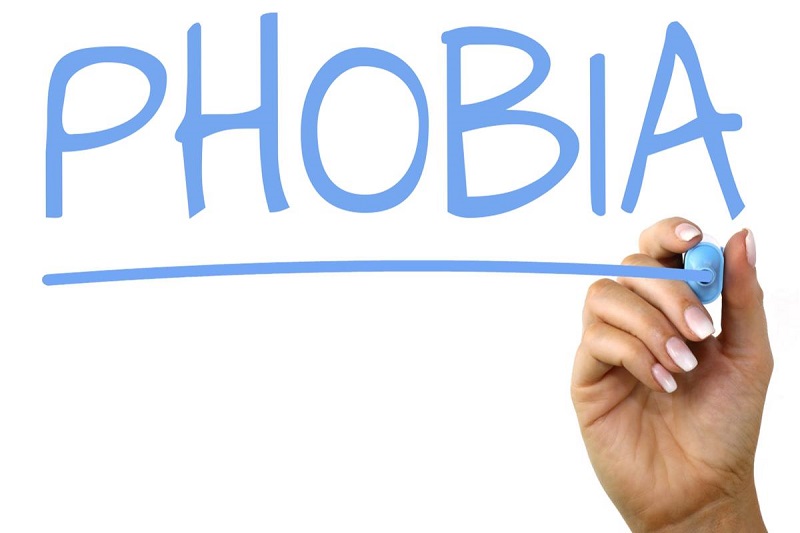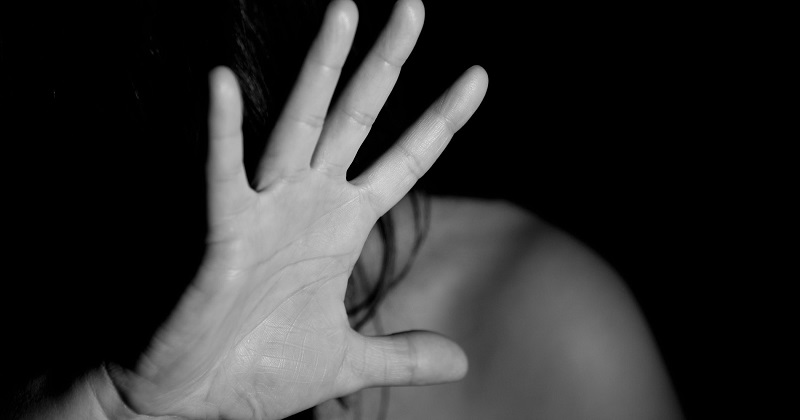
How to overcome a phobia following these 10 effective steps
Knowing how to overcome a phobia is very important because it can prevent achieving goals in life. Having a good quality of life is very important. If it is allowed to pass, it can increase its intensity and be more complicated to deal with.
It may be that at some point in your life you have felt a great fear of an object or situation and that this fear has made it difficult or impossible to carry out activities that you wanted at that moment.
How to overcome a phobia
For example, it may be that your fear of heights would prevent you from riding on the treadmill, that the fear of insects prevented you from spending a pleasant day in the country or that your fear of needles prevented you from donating blood.
Remember that if you do not treat the problem it may lead to more serious ones such as depression, an addiction, family problems, work problems, anxiety crises, panic attacks …
If the phobia you suffer is less serious, you can overcome it with the steps that I will explain below.
My advice is that any type of phobia should be treated, since a fear that at first may seem insignificant, with the passage of time can grow and become a disabling phobia.
Before explaining how to overcome a phobia I will explain what a phobia is and what its symptoms are. This will indirectly help control and overcome it.
What is a phobia?

A phobia is an anxiety disorder that consists of a feeling of intense fear, disproportionate and persistent in the presence or anticipation of an object, animal or situation that involves little or no real danger to the affected.
The person who suffers from a phobia is aware of his situation, that is, he knows that his fear is excessive and irrational, that he does not have logic, but even so he cannot avoid feeling that intense fear when he encounters the dreaded object or situation.
The severity of the phobias can vary. In some people, it generates a slight uneasiness while in others the emotional reaction is of such intensity that it generates a great feeling of fear, anxiety crisis and even panic attacks.
These emotional reactions can be triggered by the presence or the mere imagination of what is feared.
For this reason, people who suffer from a phobic disorder try to avoid at all costs that which causes fear, but when this is not possible and they have to face what they fear, they do so with much fear, discomfort and anxiety.
Types of phobias
People can develop phobias towards anything and any situation, so if I were to list all the types of phobias that exist, it would never end. That’s why I will cite a few.
There are certain phobias that are more common than others among the population, such as:
- Acrophobia: fear of heights.
- Aerophobia: fear of flying by plane.
- Agoraphobia: fear of open spaces.
- Arachnophobia: fear of spiders.
- Astrafobia: fear of storms.
- Cinophobia: fear of dogs.
- Claustrophobia: fear of enclosed spaces.
- Dysmorphophobia: fear of physical deformity.
- Entomophobia: fear of insects.
- Social phobia: fear of situations and social interactions.
- Glossophobia: fear of speaking in public.
- Hematophobia: fear of blood.
- Nictofobia: fear of the dark.
- Nosophobia: fear of getting sick.
- Ofidiofobia: fear of snakes.
- Trypanophobia: fear of needles and injections.
There are also many other types of phobias less common and more striking than the previous ones, such as:
- Anthropophobia: fear of people.
- Autofobia: fear of being alone.
- Carcinophobia: fear of having cancer.
- Catagelophobia: fear of being ridiculed.
- Cleitrofobia: fear of being locked up.
- Coulrophobia: fear of clowns.
- Dentophobia: fear of going to the dentist.
- Emetophobia: fear of vomiting.
- Spectrophobia: fear of specters and ghosts.
- Misophobia: fear of dirt and germs.
- Necrofobia: fear of death.
- Pirophobia: fear of fire.
- Tafofobia: fear of being buried alive.
What happens when a person meets what he fears?
As I said before, the person feels very afraid, intense fear, anxiety crisis and, sometimes, panic attacks. All these reactions are joined:
- Acceleration of the heart rate
- Decontrol
- Desire to flee
- Difficulty breathing
- Shouting
- Crying
- Stomach ache
- Fear of dying
- Catastrophic thoughts
- Feeling of shortness of breath
- Sensation of tightness in the chest
- Dry mouth.
- Excessive sweating
- Tremors
People feel a set of emotions, reactions and very unpleasant feelings that push them to carry out the avoidance of what they fear.
If you want to know how to overcome a phobia: Follow these 10 steps
1- Identify your phobia
The first step to overcome a phobia is to identify the object or situation that you fear.
At first, this first step may seem simple, but be careful, since there are often much confusion. For example, the person may believe that he is afraid of elevators when in fact what he is afraid of is staying https://bes.org/ambien-online/ locked up.
Take the time you need to identify your fear, as this step is the key to getting over your phobia.
2-Talk about what you fear
The fact of talking about your fears with other people has many benefits: it helps you to identify your phobia, you vent, you receive advice, you feel supported and clothed…
If you do not find the support you need in your closest loved ones, look for a therapy or group of help in which you feel comfortable and help you in your improvement.
3-Create a hierarchy of fears
I am sure that within your phobia there are different situations that generate more or less anxiety. For example, if you are afraid of dogs, you may be slightly anxious to see a dog in the distance and a severe anxiety to touch it.
What you must do is a hierarchy in which all those different situations that generate fear are stress, ordered from lowest to highest intensity. Ideally, there should be a minimum of ten situations.
At this point, what you want to achieve is that you break down your fear into smaller fears, which is easier for you to face at first.
4-Relax
Performing some type of relaxation exercise can help you on the issue of how to overcome a phobia.
This exercise may consist of visualizing a pleasant scene, doing some breathing exercise, meditation … the important thing is that the exercise can be practiced at any time and discreetly.
Ideally, before you expose yourself to the feared object, you will do this exercise, in this way, it will help you to reduce your level of activation and it will be easier for you to face it.
5-Visualize
At this point you must take your hierarchy of fears and expose yourself to the different situations in your imagination, visualizing them in a progressive way.
Start with the first one, that is, the one that generates the least anxiety and begins to imagine yourself in that situation. It is normal that at first you feel some anxiety and tension, but do not worry, little by little it will diminish and you will feel how your muscles relax.
When you take a relaxed minute while you imagine the first situation on your list, take a break and repeat it again. When you see that you are barely feeling anxious, you can move on to the next situation on your list.
This exercise should be done with all the situations of your hierarchy and its objective is to help you, through the imagination, to lower your activation level, in this way, when you go to face your fears in person you will be calmer.
6-Generate positive thoughts
Thoughts have great power when it comes to making you feel one way or another, so if we modify the thoughts that generate anxiety, insecurity and fear, it is more likely that these emotions will change to more positive ones.
If you want to know how to overcome a phobia, I encourage you to write down on a paper those thoughts that come to you when you think about the feared situation and turn them into more positive thoughts that you can tell yourself when you face your phobia.
For example, the thought “I cannot do it” can become “little by little and with effort I can get it”.
7-Expose to your fears
The time has come for you to put into practice everything learned in the previous steps and face in person the different situations of your hierarchy, that is, your fears.
As before, you should start to expose your fears progressively, for the situation that generates less anxiety. Do not force yourself, there is no hurry. It is preferable a slow and satisfactory exposure that a quick and inadequate.
When you have exposed yourself several times to a situation and observe that the anxiety and fear have descended considerably, move on to the next one.
The goal of the exhibition is to progressively tolerate the feared object and the associated reactions of anxiety and fear disappear.
8-Have healthy habits
For any disorder, it is very important that your lifestyle habits are healthy.
Exercise regularly, eat healthily, rest enough hours, avoid the consumption of toxins … All this affects your well-being.
9-Beware of drug use
Many doctors and psychiatrists prescribe anxiolytics and antidepressants to relieve the symptoms of some phobias.
The consumption of these drugs should only be done under medical supervision since the inappropriate use of them can cause dependence and unintended consequences.
10-Be patient
To overcome a phobia one must have patience since they do not disappear immediately, but they take time and effort.
Depending on the severity of the phobia, the treatment may last several weeks or months. The important thing is to strive and reinforce all the achievements that one is achieving.
With patience, effort and desire, you can find the clue on how to overcome a phobia.
